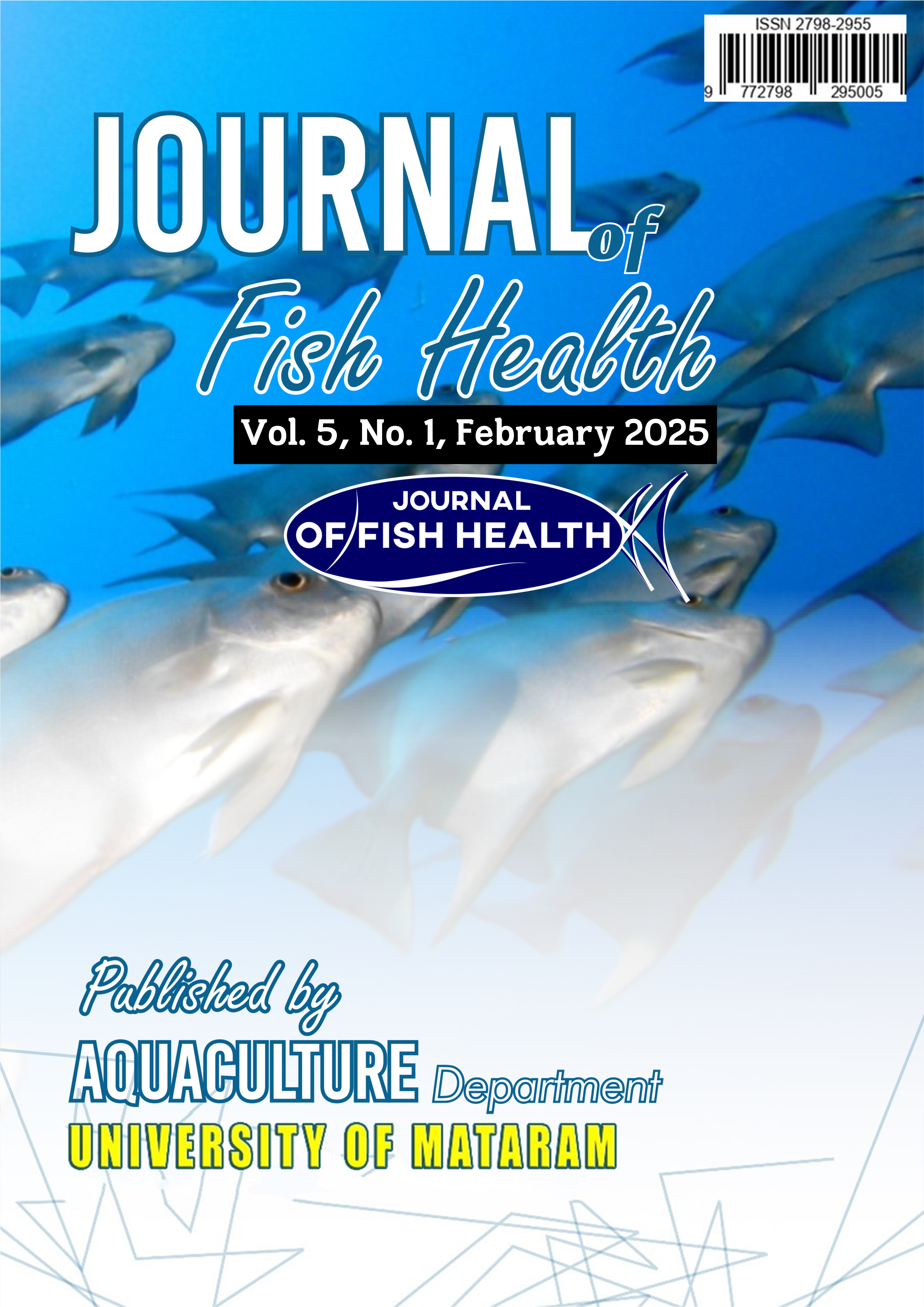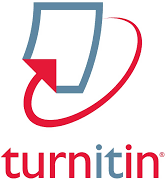Efficiency of Using Kappa-Carrageenan as an Immunostimulant Agent in the Non-Specific Immune System of Vannamei (Litopenaeus vannamei) Infected with AHPND (Acute Hepatopancreatic Necrosis Disease)
DOI:
https://doi.org/10.29303/jfh.v5i1.6358Kata Kunci:
AHPND, Kappaphycus alvarezii, Kappa-carrageenan, Vannamei, Vibrio parahaemolyticusAbstrak
Vibrio parahaemolyticus is one of the bacteria that can attack whiteleg shrimp and cause Acute Hepatopancreatic Necrosis Disease (AHPND) or Early Mortality Syndrome (EMS) in shrimp. One alternative that can be used is the use of seaweed-based immunostimulants, namely k-carrageenan. The purpose of this study was to evaluate the effectiveness of k-carrageenan mixed in feed with different doses on increasing the immune system of whiteleg shrimp infected with AHPND. This study was conducted for 60 days with an experimental method in the form of a Completely Randomized Design (CRD) consisting of 5 treatments and 3 replications, namely, P1 (Positive Control): Commercial Feed + Vibrio parahaemolyticus Infection; P2 (Negative Control): Commercial Feed + 0.9% NaCl Infection; P3: Commercial Feed + Kappa-carrageenan 8 g / kg + Vibrio parahaemolyticus Infection; P4: Commercial Feed + Kappa-carrageenan 10 g/kg + Vibrio parahaemolyticus Infection; P5: Commercial Feed + Kappa-carrageenan 12 g/kg + Vibrio parahaemolyticus Infection. The results of this study indicate that the addition of 12 g/kg of k-carrageenan to the feed affects the survival rate and immune system of whiteleg shrimp infected with Vibrio parahaemolyticus.
Unduhan
Diterbitkan
Terbitan
Bagian
Lisensi
1. The copyright of this journal belongs to the Editorial Board, based on the author's consent, while the moral rights of the publication belong to the author(s).
2. The formal legal aspect of journal accessibility refers to the same Creative Common Attribution + Noncommercial + ShareAlike (CC BY-NC-SA), implying that publication can be used for non-commercial purposes in its original form.
3. Every publication (printed/electronic) is open access for educational, research and library purposes. In addition to the objectives stated above, the editorial board is not responsible for copyright infringement















